Vacancy allowances are expressed as a percentage of rental income, and they simulate hypothetical “downtime” where the property may sit vacant for a period of time without any rental income. Vacancy allowances are a function of the geography and the property type, with smaller communities and higher risk property classes usually commanding a higher “hypothetical” vacancy rate. NOI and NIBT are impacted by three important controllable expense categories. The best way to think about NOI is that a number of add-backs and normalizations are required to understand the property’s potential return for an investor. Common examples of tenant improvements include construction costs within a tenant’s usable space (the actual space they occupy) used to make the space functional for the tenant’s specific use.
Operating Income = EBIT
This is because the expenses for a long-term care facility are typically higher than those for retail property. You can use the net operating income calculator below to quickly calculate the profit potential of a property by entering the required numbers. When looking at the results of calculating the net operating income of a property there are only two ways to interpret the data, it’s either good or bad. Specifically, This would include anything necessary to keep the property functioning as usual. You wouldn’t include the payment of the new company vehicle, even though it is a business expense it is not tied directly to the building. A podcaster may have different revenue streams and expenses compared to a visual artist or musician.
Increase Revenue Through High-Margin Products
Among the various numbers listed on payroll statements, net income (NI) is the most significant one for individual taxpayers. Understanding net income is vital to managing personal finances and ensuring accurate tax returns. In summary, personal net income is a vital concept for individuals looking to manage their finances effectively. To further illustrate the importance of net income in real-life scenarios, consider a person with $60,000 in gross income and $10,000 worth of deductions. Their taxable income would be $50,000, yielding an effective tax rate of 23%.
The opposite of net revenue is gross revenue, which represents the total earnings before any deductions. A company with high gross revenue but low net revenue may be offering excessive discounts, facing high return rates, or incurring hidden costs. For instance, if a business generates ₹50 lakh in gross revenue but retains only ₹30 lakh after deductions, it may need to adjust its pricing strategy or improve product quality.
What are Direct Costs?
If you are a sales manager, it might be your responsibility to keep sales numbers at a certain level. Using CVP analysis helps you to better understand the importance of selling more product. As you can see, the first apartment generates more gross revenues during the year, but it also has more expenses than the second building. You might assume it’s a better investment than the first, but there are other things we need to consider. Marcia owns a real estate business that purchases existing rental properties and potential rental properties. She is constantly looking for new real estate to invest in that she can either improve or run more efficiently than the current owners.
The Internal Revenue Service (IRS) sets the rules for these deductions, which vary depending on an individual’s filing status and circumstances. As a brief example of this, if a business owner is experiencing growth and makes the decision to expand into a larger location. To calculate the net operating income they would take the gross income of the business and subtract the corresponding expenses; property fees, insurance, building upkeep, and utilities. As part of our Knowledge Center, we aim to provide investors with valuable insights, from understanding essential financial metrics to keeping up with the latest investment opportunities like IPOs. In this article, we’ll explore Net Operating Income (NOI), its formula, how it’s used in financial analysis, and how it compares to EBIT (Earnings Before Interest and Taxes). Yes, if your operating expenses exceed your total revenue, your NOI will be negative.
Accurately reporting net income on tax forms ensures that we pay the correct amount of taxes or receive appropriate refunds. Understanding net income is crucial because it represents an accurate assessment of the money available to an individual for saving, investing, or spending, once taxes have been paid. By calculating personal net income, you can make informed decisions regarding your financial health and future planning. For corporations, earnings per share (EPS) is a crucial performance indicator derived from net income. As business analysts often say, “the bottom line is the bottom line.” Net income represents a company’s total profits after all expenses, interest, taxes, and other charges have been deducted from revenues. In the United Kingdom, this figure is referred to as profit attributable to shareholders.
Compare top picks for business accounting software
- Net Operating Income (NOI) is a key financial metric used to assess the profitability of income-generating properties, such as real estate investments.
- Represents the total earnings after all costs, including COGS, operating expenses, interest, and taxes, are deducted.
- CFI is on a mission to enable anyone to be a great financial analyst and have a great career path.
- Some controllable expenses are either added back to NIBT (or normalized) to arrive at NOI – we’ll look at an example shortly.
- The net operating income formula is calculated by subtracting operating expenses from total revenues of a property.
CFI is the global institution behind the financial modeling and valuation analyst FMVA® Designation. CFI is on a mission to enable anyone to be a great financial analyst and have a great career path. In order to help you advance your career, CFI has compiled many resources to assist you along the path.
Understanding this formula is essential for assessing profitability, making informed financial decisions, and identifying areas for cost optimisation. It provides net operating income formula accounting a clear picture of your revenue stream and helps improve business efficiency. Net revenue is the total income your business earns from sales after deducting returns, discounts, and allowances. Net Income DefinitionNet income, also known as disposable income or take-home pay, represents our total earnings after taxes, insurance premiums, and other deductions.
By taking into account all necessary income and expenditures, NOI provides insight into whether an investment is worth the cost of ownership and maintenance. For businesses, it represents overall profitability; for individuals, it refers to the difference between gross income (total earnings) and taxes and deductions. Net income, as mentioned, is calculated by subtracting a company’s total expenses, interest, and taxes from its revenues. The resulting figure represents the difference between earnings and outgoings, signifying the profitability of an organization. An individual’s net income represents the difference between their gross income and taxes, deductions, and other adjustments to their earnings before taxes.
- Typically, a property is more profitable when it has higher revenues and smaller expenses.
- Removing debt from the equation places focus on the income and outflow of a specific property, regardless of an investor’s financials.
- While net income is an important indicator, it can be manipulated through aggressive revenue recognition methods or hidden expenses.
- Gross income includes wages, salary, bonuses, commissions, tips, and other types of earned income.
At Tap Invest, we provide a range of fixed-income investment opportunities, and through our Knowledge Center, we ensure you stay informed about crucial investment metrics and insights. Stay updated with investment strategies, IPO opportunities, and more to make the best decisions for your financial growth. Keep in mind that there are several different expenses that are not included in this category like income taxes and interest expense. Improving NOI involves either increasing revenue or reducing operating expenses.
In contrast, EBITDA is used in the context of measuring company profitability. These costs are usually one-off expenses and can vary significantly depending on the region and nature of the purchase. With NOI you can determine the worth of a property and the potential returns it may provide. But NOI can be a bit tricky to understand, especially if you’re new to the game.
Gunakan Software Akuntansi EQUIP untuk Bisnis Anda
To calculate NOI, you add all revenue and then subtract operating expenses—typically expenses directly tied to property management, including real estate taxes, insurance, utilities, and maintenance. This calculation leaves out many other costs, including income tax, interest on debt, capital spending, and depreciation, because these are not considered direct operating expenses. Net income (NI), also known as net earnings or net profit, is a crucial measure of an individual’s total earnings after taking taxes and deductions into account. To calculate personal net income, you must first determine your gross income. This number includes all sources of earnings before any deductions are applied.
The simplest way to calculate NOI is to start with NIBT, add back non-cash and controllable expenses, then deduct normalized controllable expenses and “hypothetical” expenses. It’s critical to understand just how different these two figures can be, even for the exact same property. Let us understand the concept of net operating income theory in depth with the help of an example.
Maintenance fees, utility costs, management fees, running and repair costs among others sum up to the operating expense. Through NOI, investors and owners of commercial properties are able to know the value of the property. This calculation is helpful, especially in making investment decisions pertaining to the commercial real ESTATE. Furthermore, an investor can determine whether or not the income generated from the property is sufficient to offset all debt payments, alongside operating expenses through NOI. Net Income, or net earnings, is a crucial indicator of a company’s financial health, providing insight into its profitability.
The articles and research support materials available on this site are educational and are not intended to be investment or tax advice. All such information is provided solely for convenience purposes only and all users thereof should be guided accordingly. For example, assume the first apartment just had a new roof put on and the $20,000 of repairs will not be there in future years. Expenses can be frontloaded or put off to a later date to make the property look less or more attractive to different investors. These figures would be inserted into the NOI formula to generate a figure, as shown in the following calculation. Non-controllable expenses are cash expenses and are never added back to NIBT when calculating NOI.
First, gross income is reported on lines 7 through 22 on Form 1040, which covers wages, salaries, tips, and other compensation, as well as business income, rent, and gains from property or investments. By calculating the total gross income, taxpayers can start to understand their overall financial picture before deductions and taxes are factored in. Subtract allowable deductions – expenses that can be claimed against taxable income to reduce one’s overall tax liability. Deductions may include mortgage interest, property taxes, state and local income taxes, and contributions to retirement savings plans like a 401(k) or an IRA. Once deductions have been accounted for, the remaining figure is the individual’s net income. Net operating income (NOI) is a term often used in real estate accounting that refers to the formula for the profitability of a commercial property.

